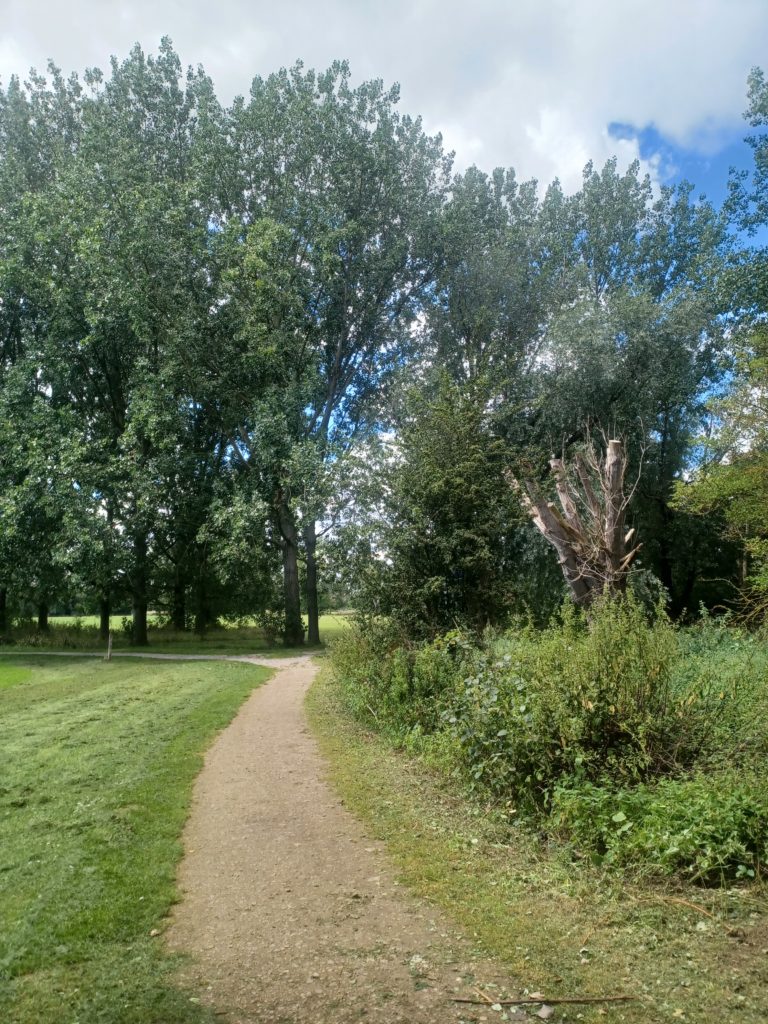
The photo above shows a section of Oak Road Playing Fields/Park, looking west and with a section of the bank of the River Hull off picture 20yards to the right. Across the River is Sutton Fields Industrial Estate. East of where this photo was taken is the shallow lake created when the playing fields were extended. In the picture and to the left of the path can be seen about nine tall trees while to the right of the path stand about three slightly less tall trees. The ones on the left are white willow trees while the ones on the left are black poplar. Both willow and poplar trees are particularly well adapted to very damp soil conditions and are species most common in marshy conditions. All the trees seen here are particularly fine specimens, both mature willows and poplars are usually much shorter, especially in waterlogged conditions. These trees are native to this environment, or were before the building of the tidal barrier across the upper mouth of the River Hull, when the River Hull would regularly overtop its banks when spring tide waters surged up-River. That said, these trees were clearly planted for effect here rather than being a result of natural colonisation.
In the undergrowth to the right stands the remains of a farmhouse which stood at the base of the River bank and nearby are the remains of some farm buildings. Some not so old people can remember when this house, no longer a farmhouse, had become a sort of artist’s meeting place. The house and nearby buildings are shown on early detailed maps as a farm and the fields around farmed. At the time of writing I do not know when the playing fields were created but am sure it wasn’t before 1930. Oak Road Playing Fields is a large green space edged by shrubs and trees and is a favourite of mine; it never seems crowded and I have always admired the way the hawthorn hedges which bordered the post enclosure fields of the farm were retained to divide-up the municipal ‘Park’ into four playing field sections. It is the only local municipal park (I know) to still include a cricket pitch, a feature once more common in other parks.
(to be continued).